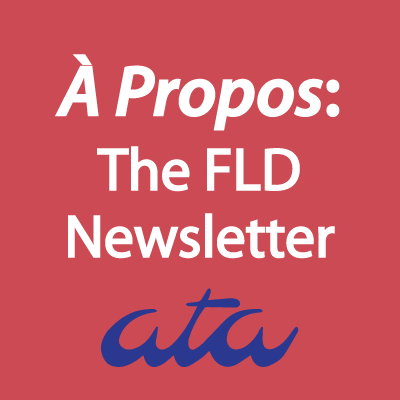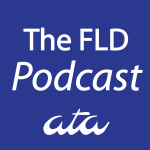 By Michele Rosen
By Michele Rosen
Now that I’ve attended my second ATA conference, I can see annual attendance will influence my career as a freelance translator. Each year, I’ve gone to the conference with a set of questions about the profession and the industry, and, so far, I’ve come out with enough partial answers and new questions to drive my professional development throughout the following year, until the next conference, when I expect the cycle to repeat.
Surrendering to the flow of information coming from the conference was easier this time around. In 2016, just six months after deciding to embark on a new career as a freelance translator, I went into the San Francisco conference with basic but important questions about how to set my rates and whether I needed to add a second language pair. I came home from that conference with copious notes and pointers to books, blogs, podcasts, and papers that helped me to find the answers.
For example, as a beginning freelance translator, I feared that translators who work in less-common and more-difficult-to-learn languages than French were somehow more valuable, and therefore more likely to be in demand and more highly paid, than translators in a common language pair like French and English. Initially, seeing all of the (more experienced) French-to-English translators at the conference, I started to fear, as I heard one Spanish translator say, that “everyone can translate French.”
However, as I began to explore the fountain of information I had collected at the conference, I began to see that, as Corinne McKay has noted, every language pair has its pros and cons. In a blog post entitled “Which Language is Best,” McKay explained that, in her view, French and German are appealing for U.S.-based translators “because there’s a good balance between work volume and rates, and because U.S.-based translators have some financial advantages” over European translators. At the same time, while there is a critical need for Middle Eastern and Asian languages, she cautioned that, “for some of these language combinations, there is a lot of competition from translators who are not native speakers of English but who translate into English anyway, even if they shouldn’t.” This information made it easier for me to decide to shelve my tentative (and frankly unrealistic) plans to become fluent in Japanese.
As I prepared to attend the conference in 2017, the previous conference served as a milestone that let me see how much I had learned since then. With a conference and a year of freelancing under my belt, I certainly didn’t qualify as a newbie anymore, but I didn’t feel quite ready to be a buddy. That said, I knew the conference would provide the opportunity to ask new questions about what it means to be a translator and to continue to figure out what kind of translator I want to be.
These questions led me to attend T&I Advocacy Day, at which such questions moved from the theoretical to the practical. The event, organized by the ATA in partnership with the Joint National Committee for Languages, was intended to introduce ATA members to public advocacy for issues important to the profession. The organizers scheduled meetings for attendees with Congressional staffers and asked us to focus on three topics: wage rate estimates for translators and interpreters from the Bureau of Labor Statistics (BLS), language services procurement policies, and best practices for machine translation.
During the strategy session with the Maryland delegation, we discussed how to explain to Congressional staffers why the BLS should change the way it estimates hourly rates for translators and interpreters. A major point of contention is that the BLS only surveys translators with full-time permanent positions to determine the median hourly rate for translators and interpreters ($22.17/hour in 2016). In pointing out how reductive this single rate is, Evelyna Radoslavova argued convincingly that it’s difficult to generalize about translators and interpreters because we all deal with different language pairs and subject matters.
While I agreed with Radoslavova that it was important to make this point to the staffers, we also agreed that the diversity in the profession makes it difficult to craft a more precise description of the profession than the one currently used by the government, which states that translators and interpreters “convert information from one language into another language.” This definition is clearly vague and incomplete, but it isn’t easy to come up with a more precise definition that won’t exclude some translators.
While this difficulty poses a challenge for language industry policy advocates, it also creates the opportunity for each translator and interpreter to define the profession for ourselves. I expect to be contemplating this scary and exciting idea for the next several months, until I have another chance to immerse myself in the impressive breadth and depth of the ATA annual conference.
Michele Rosen is a freelance translator and editor. She lives in Baltimore with her husband, two dogs, and two cats.
 Welcome to the 12th episode of the French Language Division’s Continuing Education Series. In today’s episode, Marie-Christine Gingras joins Angela Benoit to discuss a list of mots délaissés: words that translators don’t always think to use in their work.
Welcome to the 12th episode of the French Language Division’s Continuing Education Series. In today’s episode, Marie-Christine Gingras joins Angela Benoit to discuss a list of mots délaissés: words that translators don’t always think to use in their work.